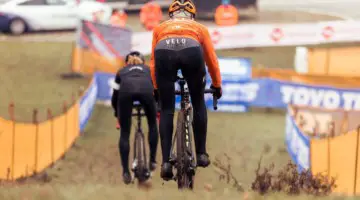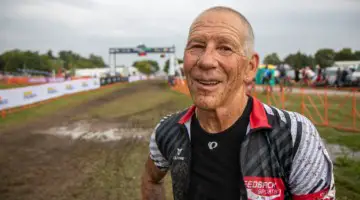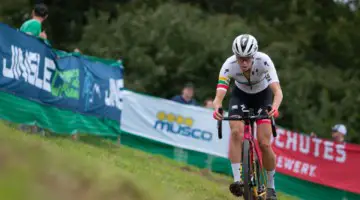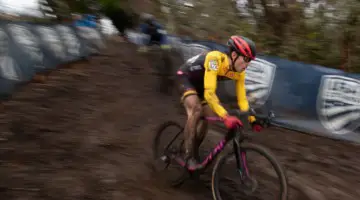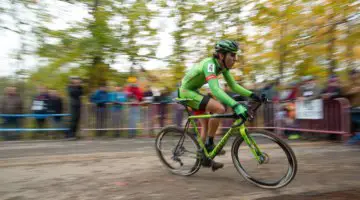It’s a long way to weekends full of cyclocross races. But with spring weather in most parts of the country, there’s no shortage of wanting to get on the bike and go for most of us. While it may not be time for specific, micro-level workouts and drills for ‘cross, there are some macro-level things we can all be doing so we’re sharp when the real intensity of cyclocross training starts. Chris Mayhew of JBV Coaching gives us some foundation workouts for this time of year with any eye towards cyclocross season.
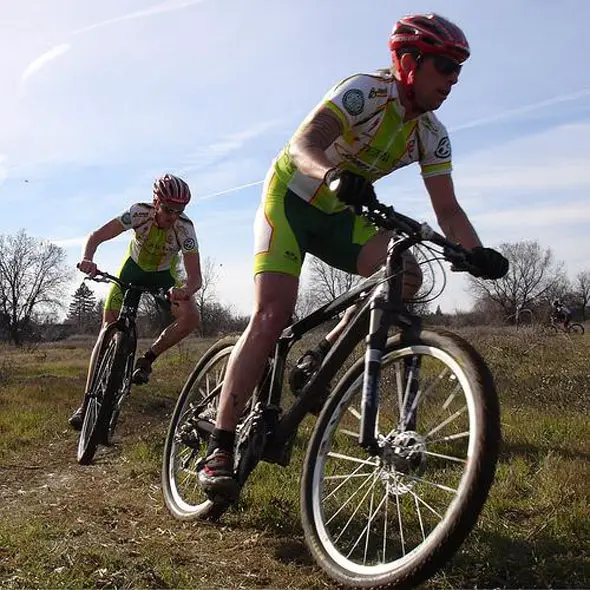
Mountain bike rides are a great way to stay sharp for the coming ‘cross season. Photo via flickr by gzahnd.
by Chris Mayhew
Bread and butter for a ham and egger.
It’s finally kind of nice out in most parts of the US and riding a bike is both appealing and easy to do. You can walk out the door in clothing that doesn’t take an hour to decide on and then get dressed in. If you’re focused largely on ‘cross though, Labor Day still feels a long way off. Without a fire directly under your chamois it can be hard to get motivated to do strenuous, organized training. At the same time, you’re probably motivated to do at least a little better than you did last season, and so you want to get started on that now. So what should you be doing now, this far away from ‘cross season? Let me outline the two things for your pre-season.
The first is a threshold focused workout. There are a number of definitions of threshold, but they all center around largely the same concept; how hard can you go for roughly an hour. Already sounds familiar doesn’t it? The exact particulars of how you define threshold aren’t too important. The main thing is figuring out a pace (speed, heart rate, watts, rate of perceived exertion or breathing rate) that you can maintain for about 30 minutes, and then riding at that pace for a total of 30-60 minutes per workout. A common formulation of the workout is 2 efforts of 20 minutes each with a recovery period between them of 2-10 minutes. You can break the work periods into blocks as short as 8 minutes or as long as 40. Don’t put too much emphasis on the details and execution of the individual workout. What ultimately matters is the sum total of doing that workout almost every week over many months. Other than that, don’t sweat the technique too much.
But given that this is, generally, a very steady effort, why such a seemingly cross-unspecific workout? First, it’s the workout that’s just about the best use of your time. It takes about one hour and focuses on the single most important factor in performing well in bike races. And it’s the aspect many people neglect the most. To put it another way, most people want to focus on the icing and don’t spend enough time baking the cake.
Threshold takes many months to maximize so the time to start is now. Another nice thing about the workout is that it’s a low cost workout, physiologically. It’s not so hard you can’t do it at least once a week, if not two to three times a week, although probably not three in a row. It won’t leave you so tired that you can’t do a workout or ride the next day. The explosive cross-specific workouts you want to focus on in August have a much higher cost in terms of recovery and physical strain. So spend your time right now working on making your engine as big as you can and save the stress and strain of higher intensity for later in the year when you’re really motivated and need those workouts.
What’s the other thing you can be working on now? General bike handling skills. This recommendation is harder to give because skills are so individually specific. Think about the sections of courses that you find difficult or that you find yourself dreading or beating yourself up on. Maybe that’s sand and you find yourself a local volleyball court to ride on. Or if you’re really lucky a sand quarry!
Maybe you find the technical, rooted terrain hard, in which case schedule a day to ride in the woods with your cross bike (and a pump and tube), or get out your mountain bike if you have one. Maybe you find carrying speed in corners is hard. Find some gravel roads to ride on with your cross bike or road bike. I’m a big fan of 25c tires (or larger if they fit) on road bikes and finding the most inappropriate places to ride them to work on loose dry corners and staying off the brakes.
The basic point is to find something challenging that you want to work on, something that will motivate you to do it. Then find a way to easily incorporate just a bit of it into whatever it is you want to do anyway.
Right now you want something easy to do that doesn’t feel like work. But at the same time you have months to address whatever your weakness is. Most of the technical skillset involved in ‘cross is something that just about anyone can master to a decent level of competency given some time and some confidence in their skills. Get your friends involved in this too. The expectations of those around us do a lot to define us. If everyone else around you can clear a particular log or rail a corner it’s great motivation for you to learn that too, and learn how from them.
So let’s take two days a week (or more) and start building the foundation of success for your ‘cross season. The first one is working on your threshold. That’s something that takes several months but will have a dramatic impact on your fitness when you work on it regularly from now through July, and it’s a workout that won’t compromise the rest of the riding you want to do during the week. The second thing is incorporating some skills work into your every day riding. Hit some dirt roads on your road ride. Take your ‘cross bike on some singletrack. Find some logs and practice hopping them on an otherwise easy day. The idea is to gain some confidence in your skills and start practicing them early without taking too much away from the riding you’d be doing anyways.
Doing a little bit of work every week consistently for the next few months is going to give you a leg up when the ‘cross season starts.























